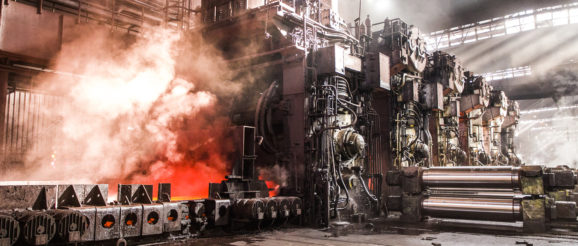Sustainability is driving innovation, and with it future growth

The primary, world-changing product of the steel industry is not steel. It’s bushfires, famine and dead koalas. For every tonne of heavy metal rolling out of the steel mills of China’s Liaoning province, or India’s sponge iron foundries, nearly two tonnes of carbon vomits into the atmosphere.
Steel-making is one of those heavy, dirty, strategically vital industries often cited as an example of why Big Coal isn’t going anywhere. Without the filthy black stuff, you can’t have nice things like double door refrigerators or an overheated Chinese construction boom.
Because turning iron ore into the high grade alloys on which modern civilisation depends is such an energy-intensive process, the potential profits for successful first movers into clean steel are enormous. The economic implications are similarly profound for those countries blessed with an abundance of renewable energy sources, the space in which to build out the infrastructure, and the capital — both human and financial —to support a fundamental reengineering of their carbon-based economies.
It’s this almost unimaginably transformative potential, the way it seems to call forth a science fiction future, that makes the cynicism of the fossil fuel sector’s boosters and pimps seem like common sense. It’s just too hard for most people to imagine a dirty great smelter running on the dinky little solar panels they’ve seen spreading across suburban rooftops.
But it could happen, and very quickly. Researchers and industrials labs all over the world are leaning into the race for clean steel, but the first globally significant development has already staked out six and half thousand square kilometres of land in WA’s East Pilbara region. There, on the red earth of the Nyangumarta People, vast fields of wind turbines and solar PV farms are Planned.
Dubbed the Asian Renewable Energy Hub, the project has backing from the state government, Macquarie Bank and a consortium of green energy companies. The generating capacity of 15000 megawatts is enough cook up one and half million tonnes of hydrogen each year, which in turn can power the production of 25 million tonnes of iron, a quarter of the world’s current output. And burning hydrogen, of course, produces water, not carbon and other greenhouse gases.
The Hub is expected to reach Financial Close by 2021, kicking off a construction phase that will employ thousands of workers. All of this is happening in spite of, rather than because of policy settings at the Federal level, which remain conflicted and hostage to the bizarro politics of climate change denial and the toxic brain stew of the Coalition’s collectivised dissociative disorder.
If there is a potential handbrake on the project it might have less to do with the technological challenges of building out a huge renewable generation base and distribution system, and a lot more to do with the market reality of having to compete for resources and skilled labor with the similarly gigantic Sun Cable project in the Northern Territory.
Sun Cable has attracted slightly more mainstream interest, partly because of the high profile backers who last year invested $50M in the research phase. Billionaire Atlassian dudebro Mike Cannon-Brookes is always good for a tweet on need to engineer our way out of the climate catastrophe. It was he who lured the alpha dog of tech dudebro billionaires, Elon Musk into building South Australia’s giant 100 megawatt battery in less than 100 days. Interestingly, his fellow Sun Cable investor, however, is mining billionaire Andrew “Twiggy” Forrest, notable for recent statements bigging up the dangerously stupid internet conspiracies which blamed Australia’s long summer holocaust on fuel loads and arson.
Why would somebody like that pivot away from carbon-intensive legacy industries and into wind-and solar powered investments? Probably because Forrest can see that a relatively small bet—well, relatively small for Twiggy—could turn into a supermassive payday a few years down the track. The brief for Sun Cable is to build a 10-gigawatt solar array near Tennant Creek, and another 22 gigawatt-hours in battery storage, with most of the juice flowing by submarine cable up to Singapore, four and a half thousand kilometres away.
It reads like planetary terraforming, more like a story setting from a Peter F. Hamilton or Iain M. Banks novel than a conventional prospectus but along with the Hub it’s real world proof of the way that business decisions on decarbonising the future are becoming decoupled from a political process crippled by ideological confusion and some very old fashioned rent seeking by established commercial interests.
The post Sustainability is driving innovation, and with it future growth appeared first on Which-50.
